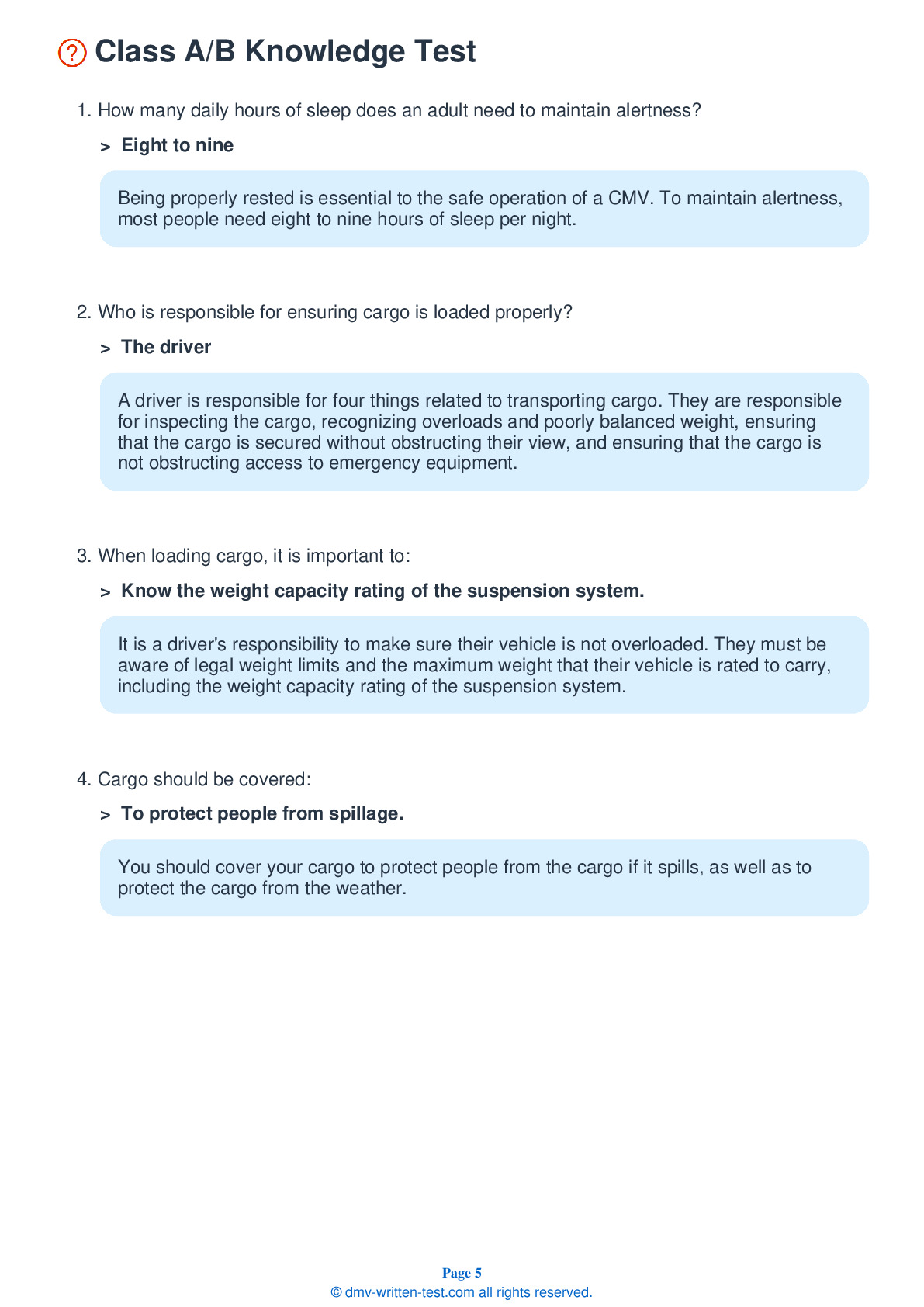Air Brakes
This endorsement is required for driving a vehicle with air brakes. To receive this endorsement, applicants must pass a written test. The test consists of 25 multiple choice questions. Each question has three answer choices. To pass, the applicant must answer at least 20 questions correctly. Test questions come from the New Mexico Commercial Driver License Manual. Questions come from the chapter covering: Air Brakes. The Air Brakes endorsement may be used with the Class A, B or C CDL.
Number of Question
Passing Score
13. In a dual air brake system, if one air system is very low on pressure:
Explanation
In a dual air brake system, either the front or rear brakes will not be fully operable if one of the air systems gets too low on pressure. If the air pressure in either tank gets too low while you are driving, you should exit the road and park as soon as possible.
14. Anti-Lock Braking Systems (ABS):
Explanation
If equipped, ABS is in addition to a vehicle's normal braking system and does not increase or decrease the braking power of any other system. ABS only activates when a vehicle's wheels are about to lock.
15. A low air pressure warning signal:
Explanation
Any vehicle with air brakes must be equipped with a low air pressure warning signal.
16. A dual air brake system:
Explanation
A dual air brake system is made up of two separate air brake systems. The systems share a single set of brake controls, but each has its own air tanks, hoses, and lines. One system typically operates the regular brakes on the rear axle or axles while the other system operates the regular brakes on the front axle.
17. If the safety relief valve in the air brake system releases air:
Explanation
An air brake system has a safety relief valve, which releases air from the tanks if the pressure gets too high. If the valve must operate, something in the system is wrong and should be addressed by a mechanic.
18. What color light indicates a vehicle's ABS is not working?
Explanation




